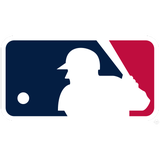MLB Hall of Fame 2022: David Ortiz headlines Cooperstown’s new class


Seven former players were inducted into the Baseball Hall of Fame Class of 2022 on Sunday in Cooperstown, New York.
Let’s take a closer look at each of the seven members being inducted Sunday:
David Ortiz
The Baseball Writers’ Association of America lone inductee, Ortiz played 20 MLB seasons, his first six with the Minnesota Twins (1997-2002) and his final 14 with the Boston Red Sox (2003-16). He is a 10-time All-Star and seven-time Silver Slugger Award winner, and still holds Boston’s single-season record for home runs (54).
Ortiz, affectionately known as “Big Papi”, is also a three-time World Series champion, helping lift the Red Sox to their 2004 World Series title that ended an 86-year championship drought, and World Series MVP. The franchise retired his No. 34 in 2017, and he was inducted into the Boston Red Sox Hall of Fame in 2020.
Ortiz finished his career with a .286 batting average, 541 home runs, 1,768 RBIs and a career slugging percentage of .552. He led the league in RBIs three times — 2005, 2006 and 2016, his last season in the league. His 20 career walk-off hits in the regular season rank third-most in MLB history.
Gil Hodges
The Golden Days Era Committee elected four players, including eight-time All-Star and three-time Gold Glove Award winner Hodges. He was part of the Dodgers organization for 16 seasons (1943, 47-61) as a first baseman, winning World Series championships in 1955 and 1959. Hodges spent his final two seasons with the New York Mets (1962-63) before continuing his career as a manager of the Washington Senators (1963-67) and Mets (1968-71), where he won his third World Series in 1969.
Hodges surpassed 20 home runs in a season 11 consecutive years, from 1949-59, and recorded 100 or more RBIs in seven consecutive seasons (1949-55). He ended his career with a .273 average and 370 home runs with 1,274 RBIs.
As a manager, Hodges posted a 321-444 record, guiding the “Miracle Mets” to their first championship in 1969.
Hodges passed away at the age of 47 on Easter Sunday 1972. The Dodgers retired his No. 14, and he was inducted into the New York Mets Hall of Fame in 1982.
Jim Kaat
Three-time All-Star, 16-time Gold Glove Award winner and World Series champion Kaat was also elected by the Golden Days Era Committee. His 16 Gold Gloves is tied with Brooks Robinson for second-most in history, and Kaat has the most Gold Glove Awards of any Twin with 12.
The pitcher’s playing career stretched 25 years and five teams — Senators/Twins (1959-73), Chicago White Sox (1973-75), Philadelphia Phillies (1976-79), New York Yankees (1979-80), and St. Louis Cardinals (1980-83). Minnesota retired his No. 36 in 2022.
Kaat compiled a 283-237 record and posted 180 complete games, and his 625 games started ranks 17th all-time and his 4,530.1 innings pitched ranks 25th. He finished his career with a 3.45 ERA and 2,461 strikeouts.
Kaat gets his moment in the sun after previously missing out on Hall of Fame Class of 2015 by two votes.
Tony Oliva
The Golden Days Era Committee also selected Kaat’s longtime teammate and Twins outfielder Oliva, who played with Minnesota from 1962 to 1976.
He is an eight-time All-Star, two-time World Series champion and Gold Glove Award winner. He was AL Rookie of the Year in 1964 and his 374 total bases that season tied a rookie record that still stands.
Oliva won the batting title (.337) for the third and final time of his career in 1971 while also leading the league in slugging (.546). He finished with a .304 batting average, including 220 home runs and 947 RBIs.
Oliva was inducted into the Minnesota Sports Hall of Fame in 1988, the Twins retired his No. 6 in 1991. He was inducted into the Minnesota Twins Hall of Fame in 2000.
Minnie Miñoso
The Golden Days Era Committee’s fourth and final electee was Latin American icon Miñoso, the first Black Latino to appear in the majors when he did so for Cleveland in 1949.
Miñoso, nicknamed “The Cuban Comet,” played three seasons in the Negro Leagues (1947-49) before he went on to play 17 years in the majors with Cleveland, the White Sox, the Cardinals and the Senators, where he became a 13-time All-Star and three-time Gold Glove Award winner. Chicago retired his No. 9.
Miñoso was runner-up for AL Rookie of the Year in 1951 after he hit .326 with 14 triples and 31 stolen bases.
Bud Fowler
The Early Baseball Era Committee elected Fowler, the first Black professional baseball player.
He made his Negro League debut in 1895 for the Page Fence Giants and his final appearance 1898 with the Cuban Giants. He died in February 1913 at the age of 54.
Baseball historians estimate Fowler played in more than a dozen leagues in places such as Binghamton, New York, and Terre Haute, Indiana and was instrumental in establishing Black baseball leagues across the country, according to the Hall of Fame.
Buck O’Neil
O’Neil, the face of Negro League baseball, was the Early Baseball Era Committee’s second and final selection.
His career as a player, manager, scout and executive spanned nearly eight decades. O’Neil began his career playing semipro baseball before joining the Negro American League in 1937. The three-time All-Star helped lift the Kansas City Monarchs to the Negro World Series champion title in 1942.
After putting his playing days behind him, O’Neil worked as a scout with the Chicago Cubs in 1955 before being promoted to their coaching staff in 1962, making him the first Black coach to appear on an MLB roster.
Get more from Major League Baseball Follow your favorites to get information about games, news and more.






